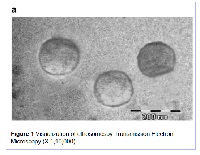Itraconazole loaded ethosomal gel system for efficient treatment of skin cancer
Keywords:
Ethosomal gel, Itraconazole, Basal cell carcinoma, Antiproliferative study, skin irritation studyAbstract
Topical application of Itraconazole for the treatment of Basal cell carcinoma represents a new hope in dermatology. Itraconazole for treatment of Basal cell carcinoma is an alternative therapeutic approach for the efficacious treatment of nonmelanoma skin cancer. Itraconazole loaded ethosomes were prepared and characterized by vesicular shape, vesicular size, entrapment efficiency. Ethosomal gel were prepared and characterized by pH, viscosity, washability, spreadibility, drug content, drug release study, stability study, in vivo skin tolerability and antiproliferative activity. Transmission Electron Microscopy (TEM), and Dynamic Light Scattering (DLS) characterise ethosomes as spherical, unilamellar structures having low polydispersity (0.384 ± 0.037) and nanometric size range (169.0 ± 49.0), % Entrapment efficiency of Itraconazole in ethosomal carrier was found to be 82.00 ± 1.78. Ethosomal gel were prepared by using Carbopol. The viscosity was found to be in the range of 1600±1.72 to 1740±1.73 cps. The spreadability was found to be in the range of 6.4g.cm/sec. The drug content of the ethosomal gel formulations ranged from 0.384-0.386 mg/gm. The value of steady-state transdermal flux was observed to be 54.2 ± 1.46 µg/h/cm with a lag time of 1.2 hrs with formulation EG1. Stability studies revealed no noticeable changes in drug release profile occurred. Skin irritation study on rabbit skin suggested that ethosomal gel may offer a suitable approach for transdermal delivery of Itraconazole. The further, antiproliferative study shows that Itraconazole loaded ethosomes is significantly more toxic than the free drug on BCC1/KMC cell line, thus making it a potential alternative to the standard therapy.
References
Kogerman P, Grimm T, Kogerman, L, Krause D, Unden AB, Sandstedt B, Toftgard R, Zaphiropoulos PG, Mammalian Suppressor-ofFused modulates nuclear–cytoplasmic shuttling of GLI-1. Nat. Cell Biol. 1999; 1:312.
Chen Y, Gallaher N, Goodman RH, Smolik SM. Protein kinase A directly regulates the activity and proteolysis of cubitus interruptus. Proc. Natl. Acad. Sci. 1998; 95:2349–2354.
Chuang PT, McMahon AP. Vertebrate Hedgehog signalling modulated by induction of a Hedgehog-binding protein. Nature. 1999; 397:617.
Gailani MR, Leffell DJ, Ziegler A et al. Relationship between sunlight exposure and a key genetic alteration in basal cell carcinoma. J Natl Cancer Inst 1996; 88:349–54.
Grossman D, Leffell DJ. The molecular basis of nonmelanoma skin cancer. New understanding. Arch. Dermatol. 1997; 133: 1263–70.
Gallagher RP, Lee TK. Adverse effects of ultraviolet radiation: A brief review. Prog. Biophys. Mol. Biol. 2006; 96:252–261.
Siegle RJ, MacMillan J, Pollack SV. Infiltrative basal cell carcinoma: a nonsclerosing subtype. J Dermatol Surg Oncol. 1986; 12:830–836.
Shimizu N, Ito M, Tazawa T, et al. Immunohistochemical study on keratin expression in certain cutaneous epithelial neoplasms. Am J Dermatopathol. 1989; 11:534–540.
Plumb SJ, Argenyi ZB, Stone MS, et al. Cytokeratin 5/6 immunostaining in cutaneous adnexal neoplasms and metastatic adenocarcinoma. Am J Dermatopathol. 2004; 26:447–451.
Bigelow RL, Jen EY, Delehedde M, et al. Sonic hedgehog induces epidermal growth factor dependent matrix infiltration in HaCaT keratinocytes. J Invest Dermatol. 2005; 124:457–465.
Olav A. Foss, Patricia Mjønes, Silje Fismen and Eidi Christensen. Is There a Relationship between the Stratum Corneum Thickness and That of the Viable Parts of Tumour Cells in Basal Cell Carcinoma?. Journal of Skin Cancer. 2016; 5.
Kim J, Tang JY, Gong R, Kim J, Lee JJ, Clemons KV, Chong CR, Chang KS, Fereshteh M, Gardner D, Reya T, Liu JO, Epstein EH, Stevens DA, Beachy PA. Itraconazole, a commonly used antifungal that inhibits Hedgehog pathway activity and cancer growth. Cancer Cell. 2010 Apr; 13: 17(4): 388-99.
Wong CS, Strange RC, Lear JT. "Basal cell carcinoma". BMJ. 2003; 327 (7418): 794–8.
Florence AT, Jani Pu. Novel oral drug formulations. their potential in modulating adverse-effects. Drug Saf. 1994; 410(3): 233-266.
Cohen JL. Actinic keratosis treatment as a key component of preventive strategies for nonmelanoma skin cancer, J. Clin. Aesthet. Dermatol. 2010; 3:39–44.
Shabana AS, Sultana, Sailaja K. Ethosomes: A Novel approach in the design of transdermal drug delivery system. International Journal of MediPharm Research. 2015; 02: 01: 17-22.
Pignatello R, Paolino D, Pantò, Pistarà V, Calvagno MG, Russo D, Puglisi G, Fresta M. Lipoamino acid prodrugs of paclitaxel: synthesis and cytotoxicity evaluation on human anaplastic thyroid carcinoma cells. Curr. Cancer Drug Targets. 2009; 9:202–213.
Sujitha B, Krishnamoorthy B, Muthukumaran M. Formulation and Evaluation of Piroxicam Loaded Ethosomal Gel for Transdermal Delivery. Int J Adv Pharm Gen Res. 2014; 2(1): 34-45.
Gupta A, Mishra AK, Singh AK, Gupta V, Bansal P. Formulation and evaluation of topical gel of diclofenac sodium using different polymers. Drug Invent. 2010; 2: 250-253.
Mario J, Mira BL, Biserka CC. Influence of Cyclodextrin Complexation on Piroxicam Gel Formulaion. Acta Pharma. 2005; 55: 223-236.
Nutan MH, Reddy IK, Kulshrestha AK, Singh ON. Pharmaceutical suspensions from formulation development to manufacturing, 1st ed. USA. Springer publication. 2010; 41-56.
Draize J, Woodward G, Calvery H. Methods for the study of irritation and toxicity of substances topically applied to skin and mucuos membranes. J. Pharmacol. Exp. Ther. 1944;82: 377–390.





